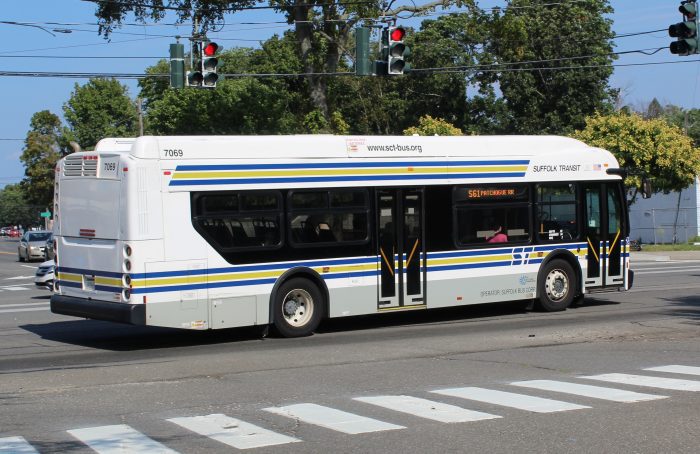Suffolk County’s bus system, a need to resolve the density-population challenge

The Suffolk County Transit bus system is facing several financial and operational challenges, county officials and transit experts say.
Suffolk County Executive Steve Bellone (D) highlighted the bus system’s prominent role in servicing the county’s residents. “The bus system is very important,” he told TBR News Media in an exclusive interview. “There have been a number of efforts over the years and a lot of discussions about [improvements].”
Despite good-faith efforts, many challenges remain, presenting difficult questions for policymakers. Former Suffolk County Legislator Kara Hahn (D-Setauket) outlined some challenges riders face.
“We don’t have enough routes, they don’t run often enough, and they don’t run late enough into the night or start early enough — there’s no question about it,” she said. “Traffic is increasing, our roadways are crumbling, and an improved bus system would certainly help needy families across Suffolk County.”
Cost a barrier to improvement
Richard Murdocco is an adjunct professor in the Department of Political Science at Stony Brook University. He noted the vital need the county’s bus system fulfills, particularly for vulnerable populations.
“Socially, it’s a service,” he said. “If people are taking the bus in Suffolk County, there’s a reason why,” as bus riders are often “the most vulnerable, and they need and rely on the bus system. It’s a public good.”
Murdocco considered mass transit in general as “a financial loser.” The bus system itself, he added, operates at a perpetual loss, requiring considerable subsidization. Hahn supported this assessment.
“It’s a difficult nut to crack because of the size of the county and the funding that we have access to,” she said. “It’s expensive to run buses all day long across a county as large as ours.”
Financing improvements, therefore, can be a complicated policy determination, especially given the dearth of riders. “The costs are always going to be astronomically high because there’s simply not enough population density for the routes to sustain it,” Murdocco said.
He added that Suffolk’s suburban character hinders ridership and hampers public investment, unlike densely populated urban areas.
A bus system “operates within the confines of the built environment,” the SBU adjunct professor said. “The fact of the matter is that Suffolk County isn’t dense populationwise. A mass transit system like the bus system needs density to thrive.”
While the bus system is “financially insolvent,” according to Murdocco, he did not consider systemwide expansion and modernization entirely off the table.
Improvements are promised
Murdocco advocated for a “more holistic approach” when analyzing the bus system, tying buses to other modes of public and private transit. He presented the idea of a regional transportation study.
“You need a cohesive look,” he said. “Not even framing it as a bus study, but a holistic transportation study with local planners from the municipalities” is in order.
He added, “I want local governments working in conjunction with the county to look at the issue like they used to do.”
Bellone said the necessary studies and community outreach initiatives have taken place. He forecasted that systemwide improvements would be coming down the road.
“We’ve done the analysis and a lot of community work,” the county executive said. “A lot of improvements are coming, based on community feedback and the studies that have been done.”






